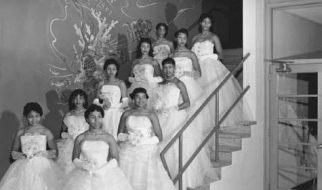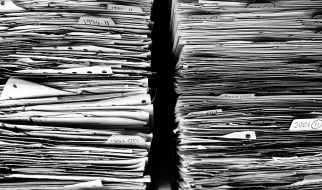At first you may have to rack your brain a bit to think what sort of fruits come from palms. You might be surprised how many do, and some of these fruits are among some of the most important fruits from an economic as well as health point of view. Coconut is the first fruit that probably comes to mind, and date fruits might be the next. Both of these are important in the world economies. But one you may not have known was a palm fruit is the Acai berry. There are dozens more, most which are tropical in origin, but a few which can be grown and enjoyed even in marginal warm temperate climates such as found in parts of California, Florida, Texas, Arizona and a few of the southeastern states.
If you want to be absolutely accurate, almost all palm fruits are edible, though I would not really recommend eating most of them. Some are toxic however, and have high levels of oxalates in them so these are palm fruits that definitely should be avoided (see article on Dangerous Palms). I have tried numerous palm fruits myself and have been disappointed most of the time. However our local squirrels seem to like them regardless and palm fruits are a large part of many Fox Squirrel diets in Southern California.
Also, for accuracy, some of the palm ?fruits? discussed below are actually the palm seeds or nuts within the fruits (such as the case with the coconut, jubaea and parajubaea species). The actual fruit parts of these palms is just the fibrous, mostly inedible seed coating surrounding the nut or seed.
There are already several articles in Davesgarden about coconuts and dates. Both have recently been increasing in popularity due to health benefit claims of these fruits and their byproducts. In particular, coconut water has really become a popular item, at least here in Southern California, and dozens of brands of this product seem to have magically popped up overnight.
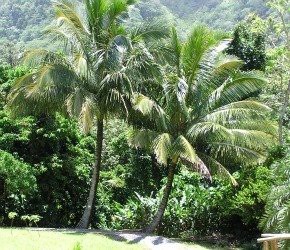
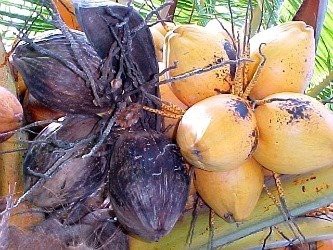
Coconut palms in Hawaii (left); right photo shows ripe coconuts (left) and unripe (right)- photo Thaumaturgist
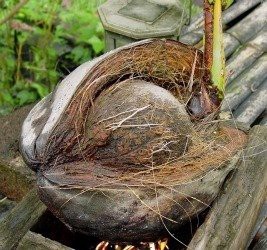
Coconut cut up open showing fibrous, inedible fruit layer around the actual seed (nut) inside (photo htop)


Entire shelf of coconut water options at grocers (left); one of many other food products from Coconuts (right)
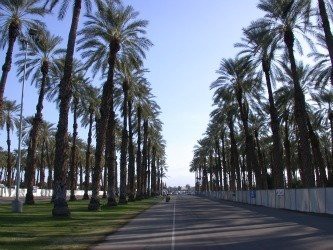
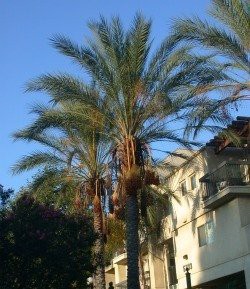
Date palms in Cochella Valley, southern California (left); Date palms in landscaping full of ripening fruit (right)
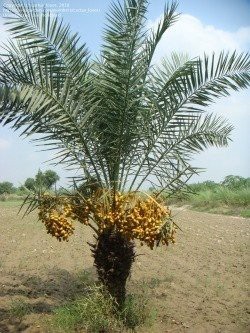
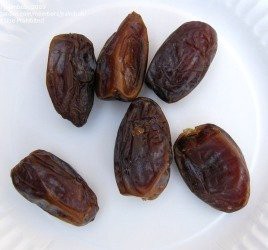
Date palm Pakistan Dhakki variety left (photo cactus_lover); Medjool dates (right)- the most popular for eating in the US

Dates on tree unripe still
But few palm fruits can top the Acai berry for health claims. This fruit comes from a South American tree in the Euterpe family (Euterpe oleracea aka Acai Palm), a clumping, tropically fastidious palm that is also an attractive landscape plant as well as an economically important source for palm heart (see this article for more reading.) Many people have been asking me over the last few years how they can grow this palm in their greenhouses or back yards. Unfortunately it is a nearly impossible palm to grow outside the tropics with only the southern-most tip of Florida and Hawaii having climates in the US that can support this palm. And it is a very tall palm (over thirty feet), so growing it in a greenhouse (unless you have a really tall one) is not practical. And it does not tend to fruit well until it reaches maturity.
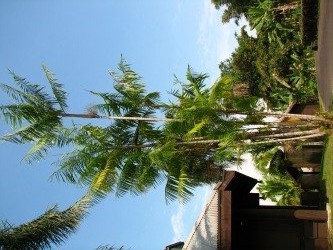
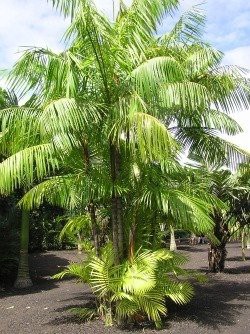
Acai palms (Euterpe oleracea) in cultivation, Hawaii
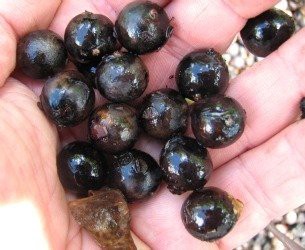
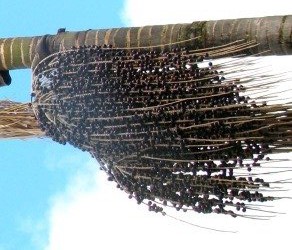
Acai fruit (left); very similar in appearance, Mountain Acai (Euterpe precatoria) fruit in tree- right photo
As you can see from the article below, Acai berries (if you believe everything you read) are truly a magical fruit, curing aging, diabetes, dementia, bad skin, etc. The antioxidant and fatty acid components alone can supposedly help cured dozens of common maladies. And the palm fruit business is making a fortune off these claims. I am not able to determine what is actually true, though some of the weight loss claims have been found to be fraudulent and there have been big lawsuits over this already. Just Google acai fruit and you will see what I mean. The link below is to one of the better articles on Acai and it has some nice photos of Acai berries (as I do not have any). Below you can see some Euterpe precatoria (aka the Forest Acai Palm) fruits which supposedly have even a higher antioxidant concentration than Euterpe oleracea fruits and look nearly identical. There really isn?t all that much fruit to each berry as 90% of the volume is filled with the palm seed within.
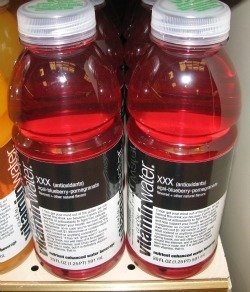
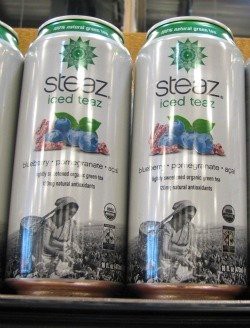


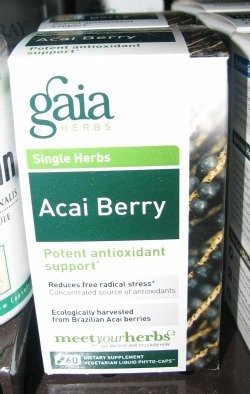

Above are just a few of the dozens and dozens of Acai products one can find in grocers today
For more reading on Acai, clickon this link.
One of the tastiest of all the palm fruits comes from the Peach Palm (Bactris gaisepes), which makes a juicy, red fruit that reportedly tastes a bit like peaches. Most Bactris are intensely spiny palms, but a spineless form of this species has been selected for in cultivation making harvesting of this fruit much more practical. This is another fairly fastidiously tropical species. It too is a good source of palm heart like the Acai palm.
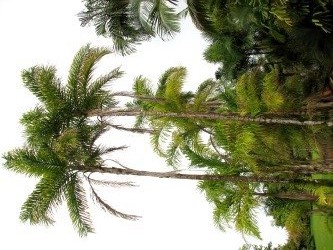

Peach palms (Bactris gaisepes) left photo: Right is close up of fruit in tree. Both these photos are of the cultivated non-spiny form of this species


Images borrowed from Wikipedia for Peach palm fruits and commercial product
Below are some links to recipes for Peach Palm fruit
http://www.mamas-recipe.com/cream-peach-palm-fruit.html
http://costaricainsights.blogspot.com/2010/02/peach-palm-sorry-translation-for.html
Elaeis guineensis (and its South American relative, Elaeis oliefera) are known commonly as Oil Palms and are among the most economically important of all the world?s palms. The African Oil palm is the primary source of palm oil throughout the world, and it is harvested from both the fruit and the seeds. Technically palm oil is obtained from the fruit of these palms while palm kernel oil, the far more important economic product, is obtained from the seed of these palms. This kernel oil is very high in saturated fats and has been villanized as being the cause for all sorts of ailments from high cholesterol to coronary artery disease. It is one of the most common vegetable oils in processed foods. On the other hand, palm oil from the fruit of these palms is considered one of the more healthful oils, full of vitamin E fractions and other antioxidants as well. Many local parrots live in part of this fruit and the oils within and maintain an excellent health because of it. The palms themselves are large, solitary majestic species definitely worthy of growing as landscape palms, even if they are a source of such dietary evil.


African Oil Palms (Elaeis guineensis) in Thailnd (left) and Hawaii (right)
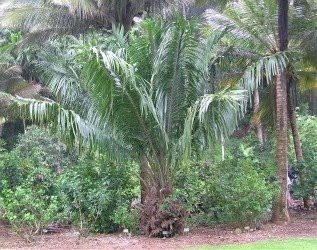
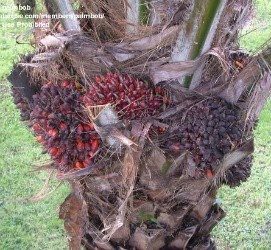
South African Oil Palm (Elaeis olifera) left photo; Oil palm fruit in tree (right)
Another palm that has received its share of negative attention is the Betel Nut Palm (Arecea catechu), a very commonly grown and moderately ornamental palm through many Asian countries. Betel Nut is a mildly hallucinogenic fruit that is usually chewed to effect, somewhat as one would do with chewing tobacco. There is some debate about the addictive qualities of this fruit, but it is certainly apparent that excessive chewing causes all sorts of dental decay as well as a mild sedative/stimulant action (not sure how it can do both, but it seems to) that can affect ones work. It has also been associated with increased incidences of oral cancer, asthma exacerbation, hypertension, psychoses and type two diabetes. Additionally the discoloration it creates to ones mouth and gums is unsightly, as is the constant spitting chewers have to do to get rid of the large quantities of saliva the fruit stimulates. Many other species of Areca have been chewed as well, though most are far less common in cultivation.
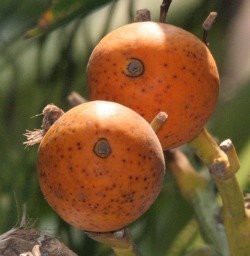

Betel Nut Fruits from Wikipedia
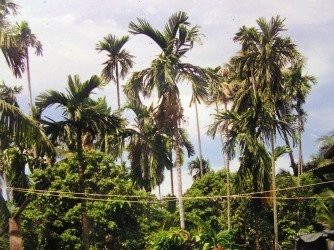
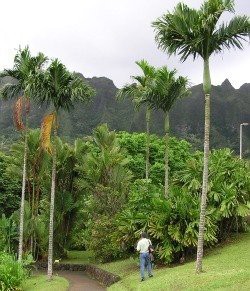
Betel Nut Palms (Areca catechu) in Thailand (left) where they are grown for eating/chewing; and left in Hawaii where grown for landscape purposes


Betel Nuts wrapped in leaves ready for chewing (left); person chewing Betel Nut (right); both photos from Wikipedia
Another tropical palm sometimes grown for its edible and quite tasty fruit is the Snake Palm (Salacca zalacca). This is an intensely spiny palm and sadly not terribly ornamental, so few grow this as a garden palm (hence I have not seen too many), but it is somewhat economically important in some Asian countries as a food item. It is called the Snake Palm due to the fruit?s snake-like scaly skin. The edible part is a large white, succulent but somewhat astringent fruit. On a trip to Thailand I had the opportunity to eat this fruit and it was actually pretty good.
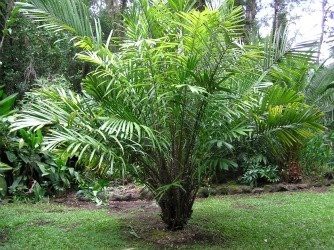
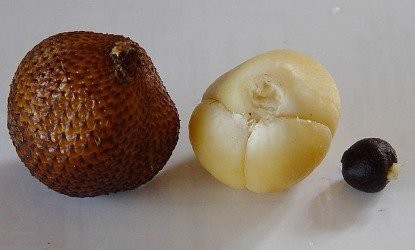
Salacca zalacca in cultivation Hawaii (left or above); fruit with seed coat, then without, and then seed itself (right, or lower, photo from Wikipedia)
Locally, for me, there is a species of palm (Butia capitata, or perhaps B. odorata as its name may be officially changing soon, aka the Jelly Palm) that has very tasty fruit. This fruit is particularly good for making jam and jellies (hence the name), but eating it right off the tree (or usually off the ground as it tends to fruit best once the fruit is just out of reach) is fine with me. There is a huge variation in the amount and sweetness of the fruit from tree to tree, so if you try it once and don?t find it particularly appealing, try another tree?s fruits just to make sure. Other Butia species have similar tasty fruits but are far less common in cultivation.
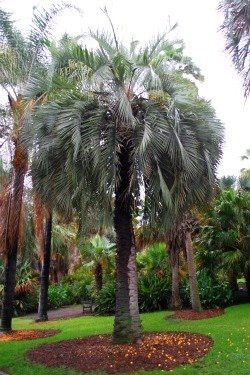

Jelly Palm (Butia capitata) (left); Butia fruit in tree (right)
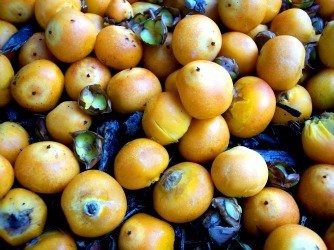
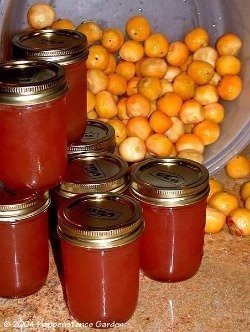
Butia fruit on ground under tree (left); Making Butia Jelly (right photo by Happenstance)
Click on this link for a recipe for Butia Jelly
Another local palm tree that has several edible attributes is the Chilean Wine Palm (Jubaea chilensis), one of the hardiest of all the world?s palm trees and perhaps the second most hardy of all the pinnate palms (Butia being the hardiest). Again, as in the Coconut, it is actually the seed that is the edible part of this palm, with the fruit being fairly bland and dry (I have tried it many times since it looks like a giant Butia fruit? but never any good). Even the popular hybrid, Butia x Jubaea, does not make a good edible fruit. However, the seed (difficult to eat in my opinion) is very similar in flavor to the coconut. The seeds are extremely hard and quite small (relative to a coconut seed at least) and, to me, hardly worth the effort. This palm has traditionally been grown for its sap from which wine can be made? however, this process kills the tree (and these are very very expensive trees).
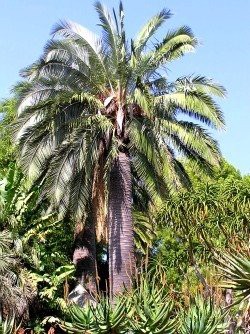

Chilean Wine Palm (Jubaea chilensis) in Southern California (left); fruit in tree (right)
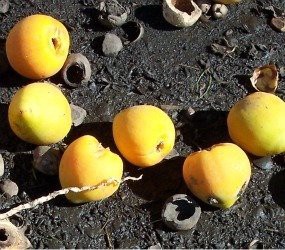
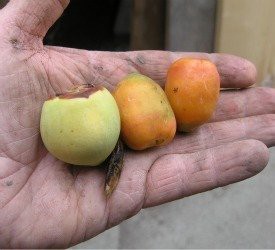
Jubaea fruit on ground (left); Butia often hybrdizes with Jubaea and this fruit actually is moderately edible (left) and looks just like Jubaea fruit
Though not currently known for its edible fruits, the Saw Palmetto Palm (Serenoa repens) was historically a source of food for native Indians in Florida (where it is a native species). Today it is much better known as the source of a prostate medication found in the fruit that helps shrink overgrown prostates as well as relax uptight urethras.
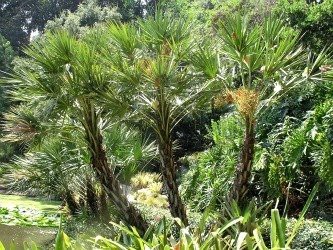

Saw Palmetto (Serenoa repens) normal color in Southern California (left) and blue form in Florida (right)


Saw Palmetto fruits (unripe left) and ripe (right). Right photo by Floridian
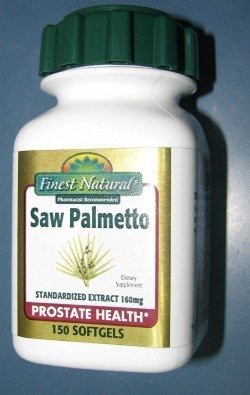

Saw Palmetto products (some of many) on the market
Several other cold hardy species have reportedly tasty fruits, notably the Guadalupe Palm (Brahea edulis) and the common California Fan Palm (Washingtonia filifera). I have to admit to not trying either of these, but have heard the former is rather good, particular for cooking. Washingtonia fruits are extremely small and there is barely any fruit surrounding the tiny, beebee sized seeds (which are hard as a rock), so one has to be careful when eating these fruits (or you could lose a filling).

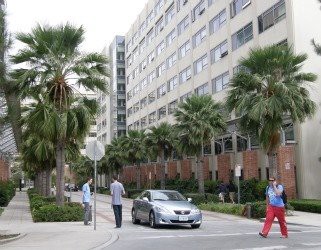
Brahea edulis used as landscaping palm in Los Angeles
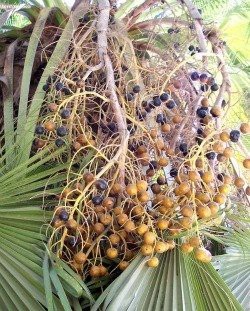
Brahea edulis fruit ripening in tree

Washingtonia filifera in Southern California


Washingtonia filifera fruit on tree, and closer with seed exposed (right); both photos Xenomorf
Other species noted for their edible fruit around the world (though primarily eaten by locals) include several species of Acrocomia, Actinorhytis, Allagoptera, Astrocaryum, Attalea, Bactris, Borassus, Calamus, Carpoxylon, Chamaerops, Clinostigma, Copernicia, Cryosophila, Daemonorops, Dypsis (many species), Gulubia, Hyphaene, Jubaeaopsis, Latania, Loxococcos, Nypa, Oenocarpus, Parajubaea, many species of Phoenix aside from dactylifera (though I have not found these all that great), Pinanga, Ptychococcus, Sabal and Syagrus (many).
Originally published at davesgarden.com.
